10 cores, 4 memory bars, two graphics cards and one motherboard
At first there was the question of the platform, but there is currently no way around Intel's enthusiast systems with socket 2011v3. After some thought, we finally decided on a Core i7 6950X, which we run on gaming-compatible 4.3 GHz. Theoretically (and practically) 4.4 GHz would have been stable, but then the power consumption explodes into the absurd and then even stands in the way of a quiet water cooling.
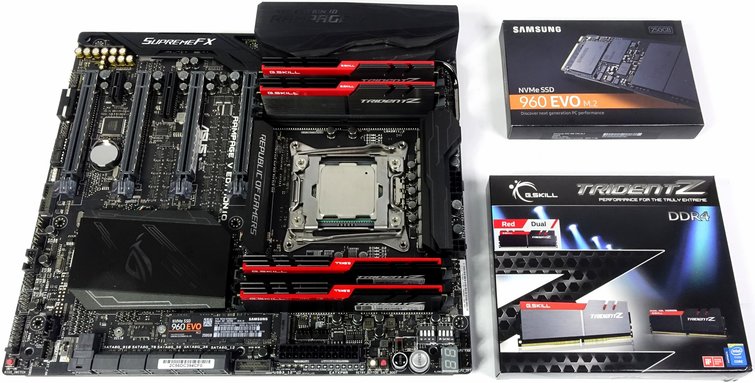
With the Asus ROG Rampage V Edition 10 we have secured the matching substructure, which we have equipped with 32 GB (4x 8 GB) G.Skill TridentZ. We set the RAM clock to DDR4 3400, which was stable even in endurance tests. A rather cheap cooler from Phobya is used as a CPU cooling block, which is quite suitable for the relatively large Die of the Broadwell-E.
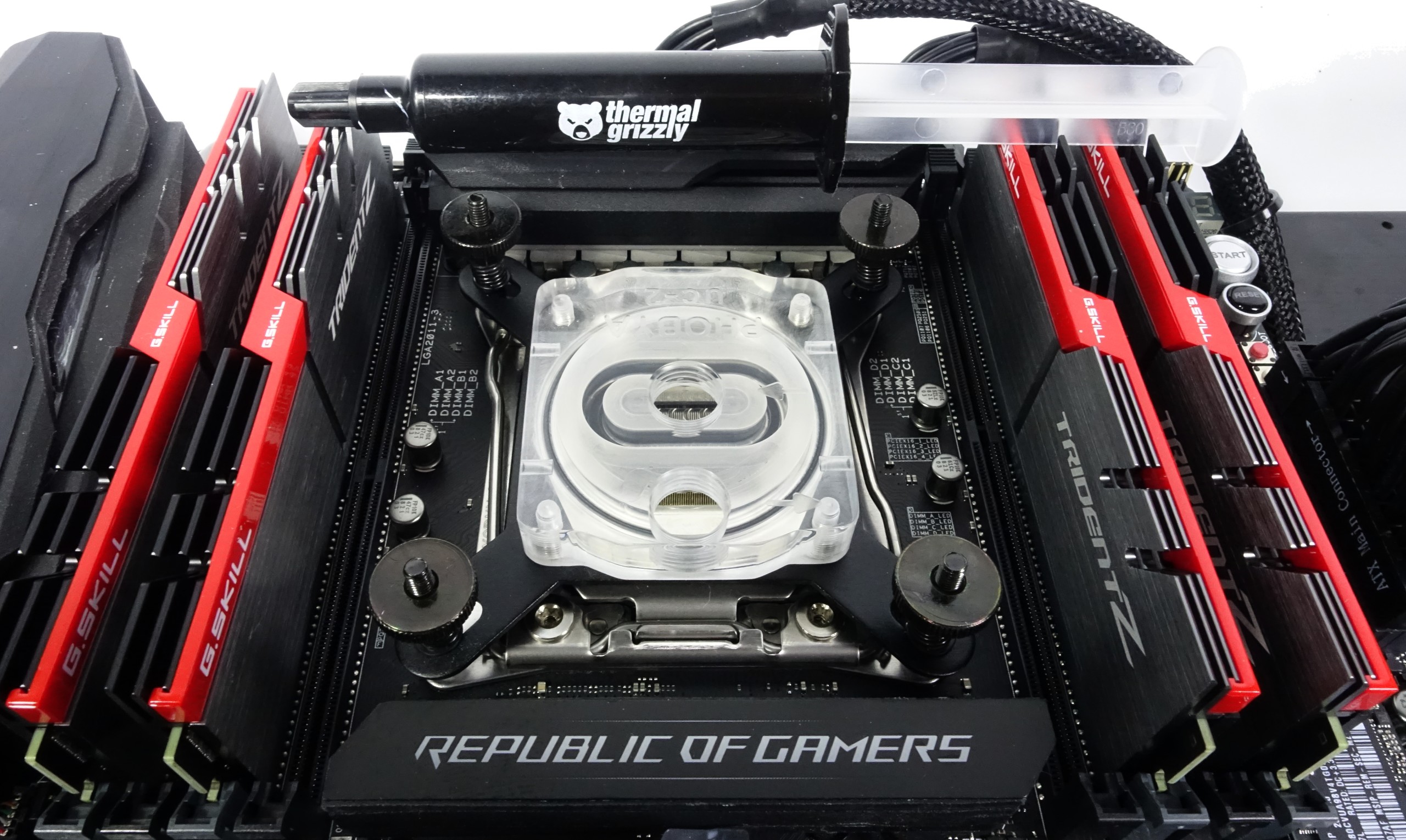 The water block of Phobya is good average, but cheap
The water block of Phobya is good average, but cheap
The whole thing was then together with the power supply, one be quiet! Dark Power Pro11 with 850 watts rated power, screwed onto the mounting plate and already – as far as possible and sensible – pre-wired.
We installed a total of two radiators, whereby the large 480 had to be mounted on a carrier plate. We had deliberately chosen an Alphacool NexXxos XT45, because at the highest point we could measure about 8 cm of space up to the glass plate and a radiator with a thickness of 60 mm together with the fans would have simply become too high.

As you can clearly see in the picture below, Lian Li has provided the underside of the housing only with a hole grid and no real fan recesses, so that this would certainly have had a significant negative effect on the airflow if installed directly. In addition, the grid did not match the thread openings on the radiator.
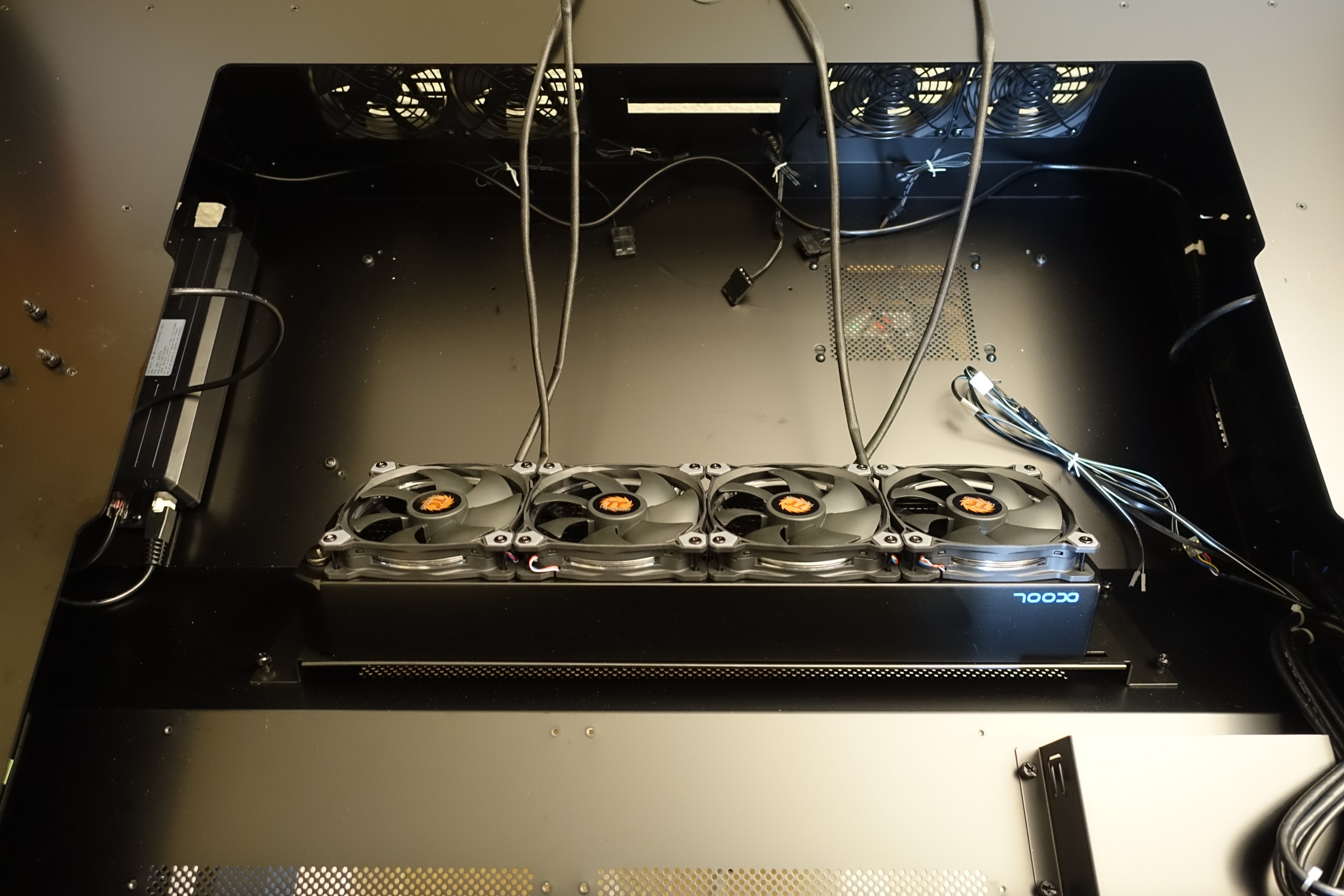
Since we wouldn't be enough with just a single radiator, we also planned a second radiator from the same manufacturer, which is however much shorter as a 240 mm radiator. In terms of thickness, we had to limit ourselves again to 45 mm, otherwise the fans would have already collided with the VRM coolers of the motherboard.
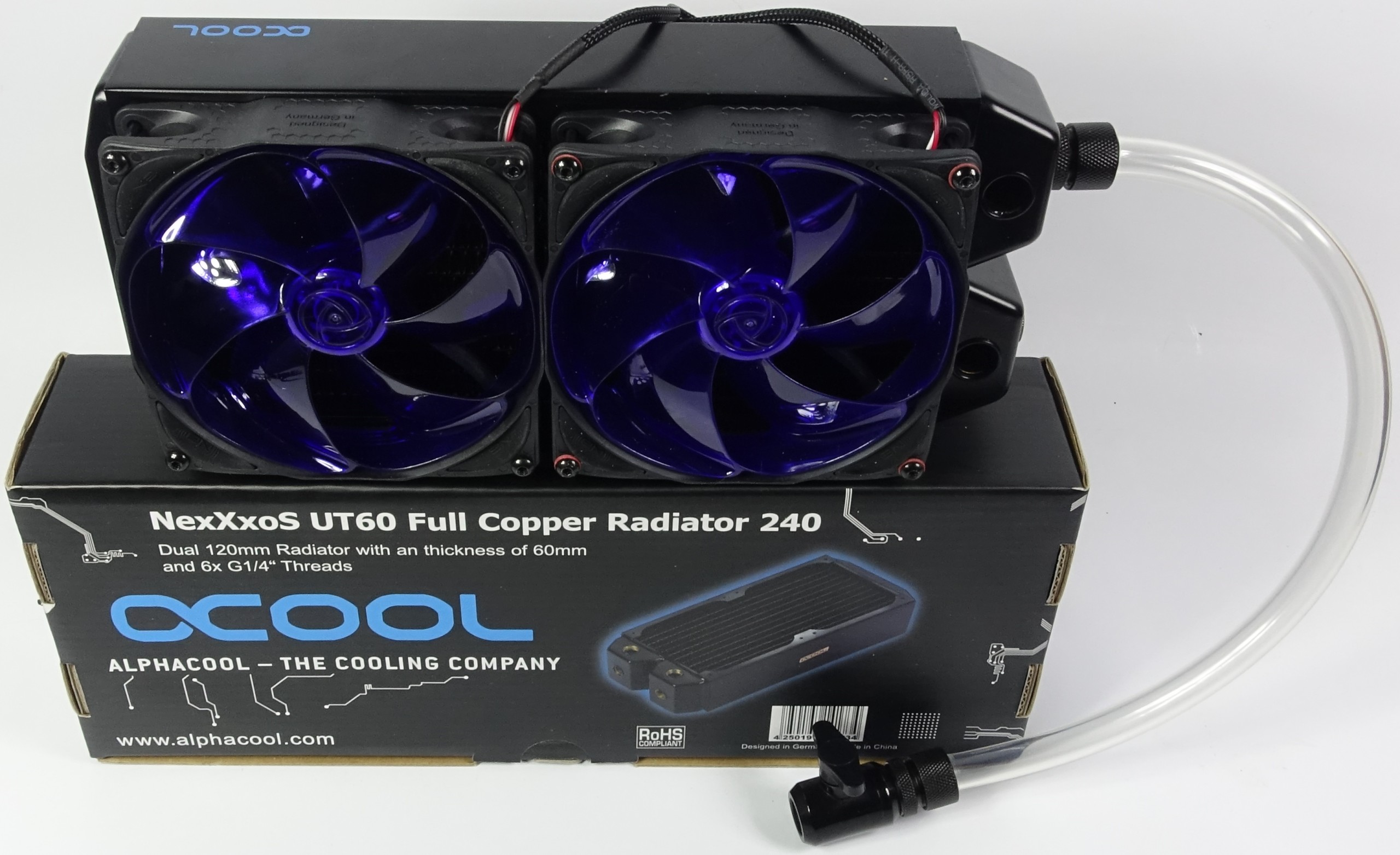
In the case of the smaller radiator, which was also installed much deeper than the compensating tank and the other components, we have attached a drain hose with ball valve to the lower drain, which can also be conveniently installed through the bottom opening in the table. can lead out.
This guarantees that we can drain the water comfortably and easily later on if necessary (maintenance, component replacement, etc.).

Lian Li has obviously never seriously tested with larger water cooling components, otherwise the missing one to two centimeters could have been easily taken into account in the construction. This is a pity in that there was otherwise no reason for complaints during installation.
The core of any water cooling: the pump
Now it gets interesting, because we have deliberately dispensed with a conventional pump and instead bet on two Alphacool "Eiswolf GPX Pro". This is a combination of VGA cooling block and pump attachment, so that each of the two coolers could have been used as an all-in-one water cooling system alone. Since we had already tested this cooling solution in detail, we already had relevant experience.
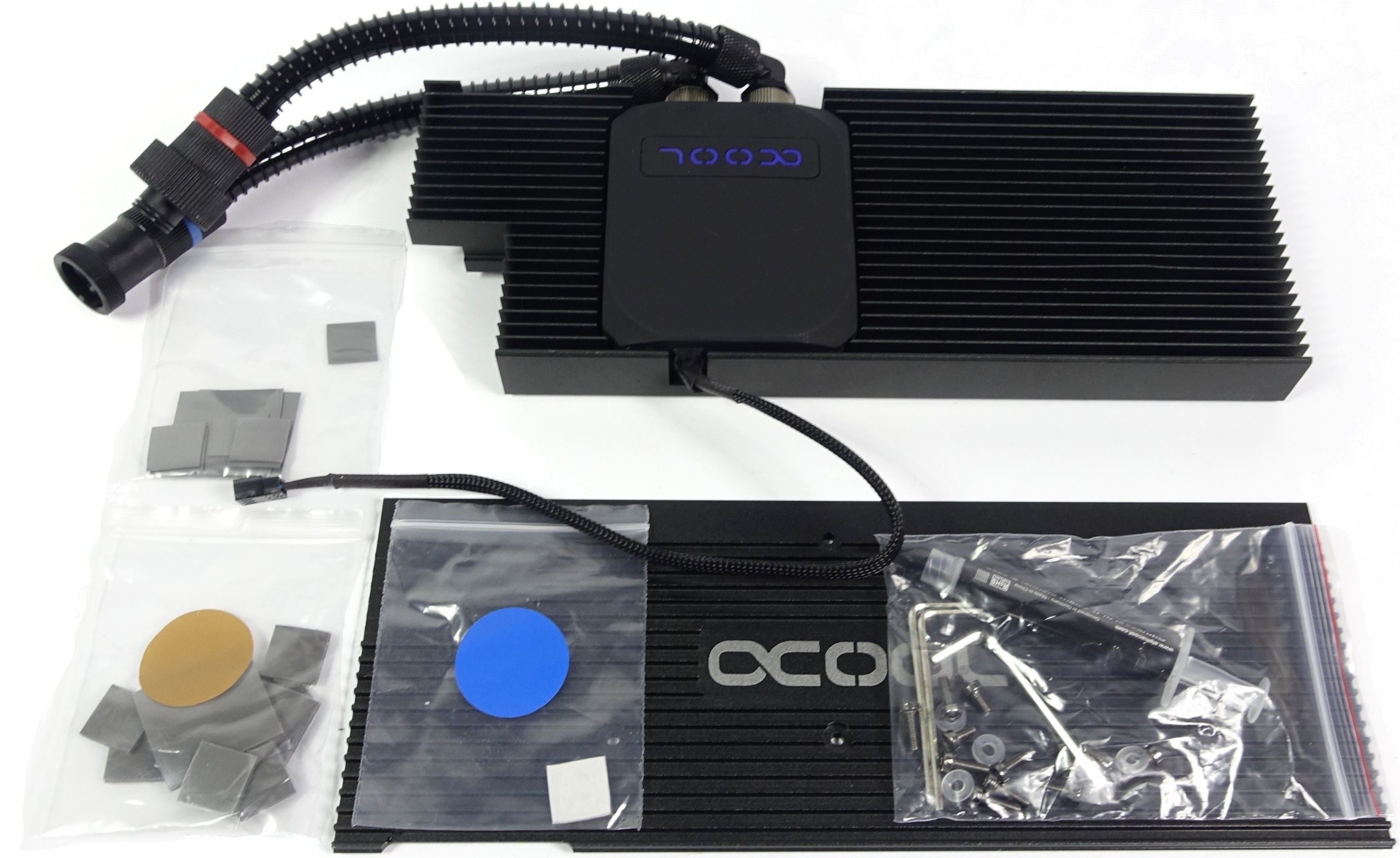
But what was completely new territory for the manufacturer: What do you do with an SLI with two graphics cards? Is a pump enough and you use a normal heat sink instead of the second card, or do you better combine two pumps and then risk negative mutual influences if necessary? Curiosity has won as always, but we have kept both options open. You never know…
In order to better understand this pump history, one must probably go a little further at this point. In order to stay out of all this confusion in patent litigation (i.e. when it comes to what is patentable and what is not), Alphacool has simply turned the skewer (in this case the rotor) at the pump. What is so beautifully called a "reverse flow" pump in New German is actually a "sauge", in which the cooling water is not pressed onto the micro channels, but is actually sucked in in the opposite direction and "spit out".
Let's take a look at two sheets of Alphacool's patent specification that we were able to obtain to understand how something patented is depicted and described as a pattern.
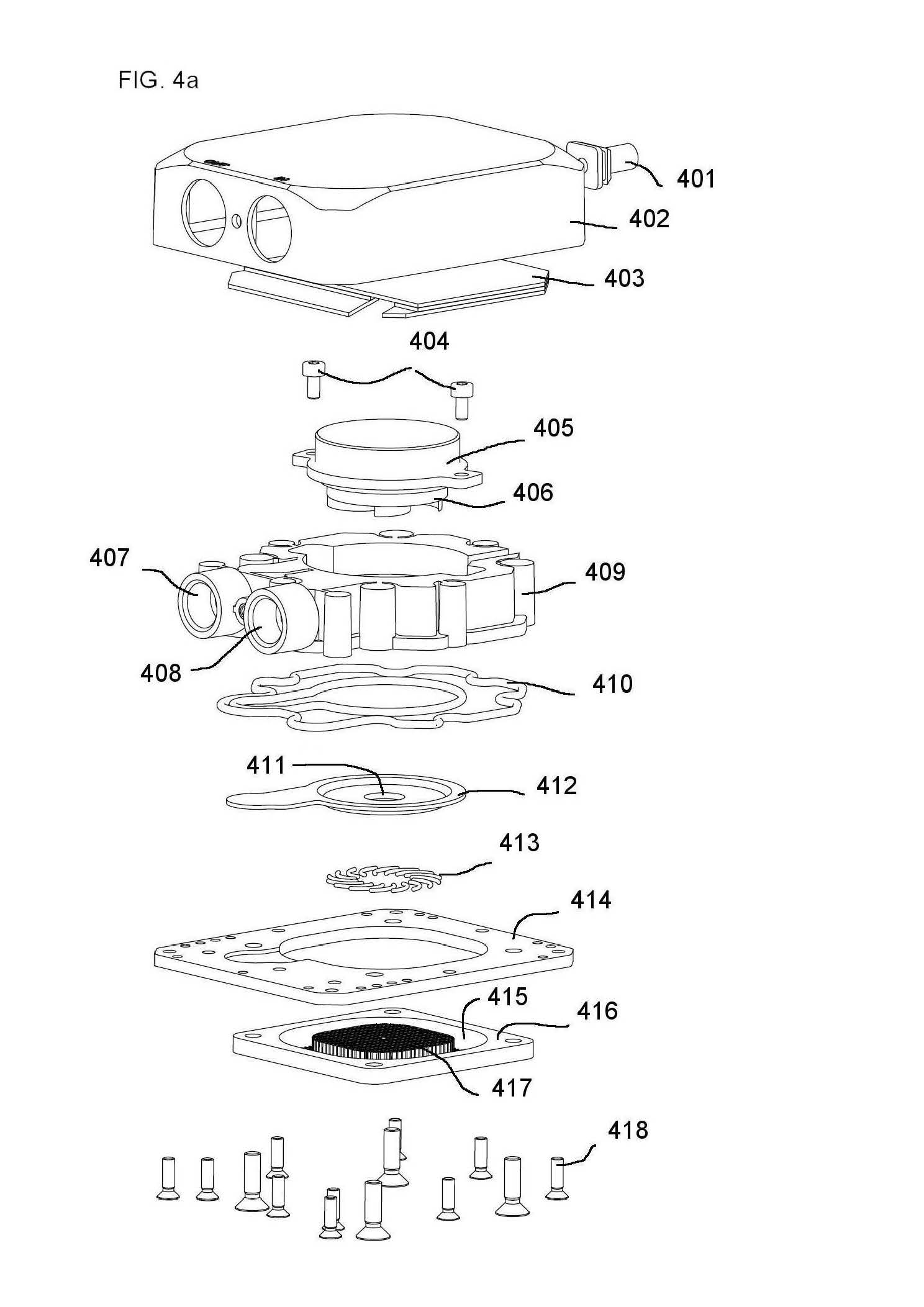 |
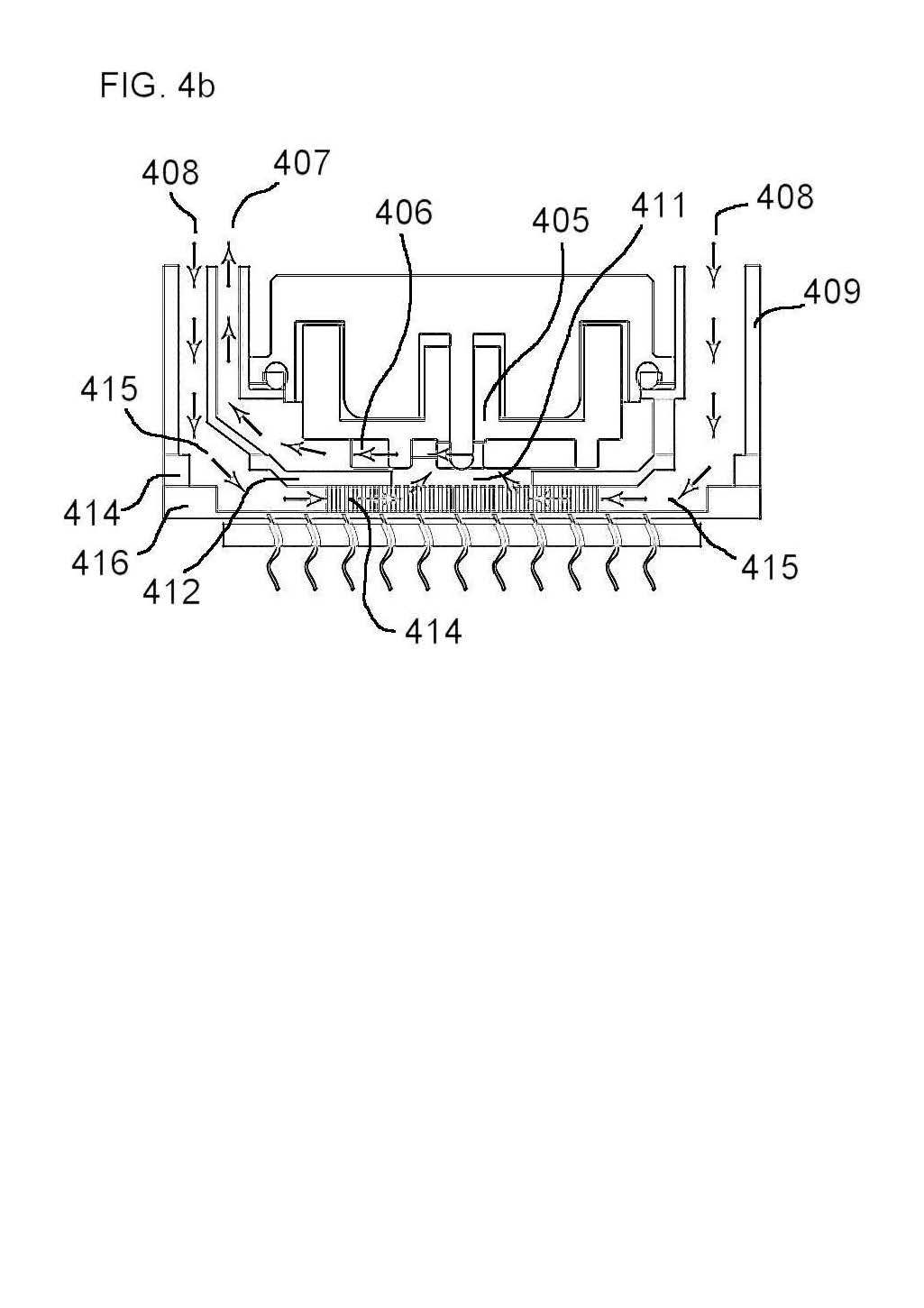 |
But can this construct work in a serial combination of two pumps at all, and if so, how well? The most important prerequisite is that both pumps never run empty, i.e. operate without water. However, if you look at the connectors on the graphics card (picture below), the slightly higher radiator is hardly enough to ensure that both GPX Pro are already filled with water when starting the system.
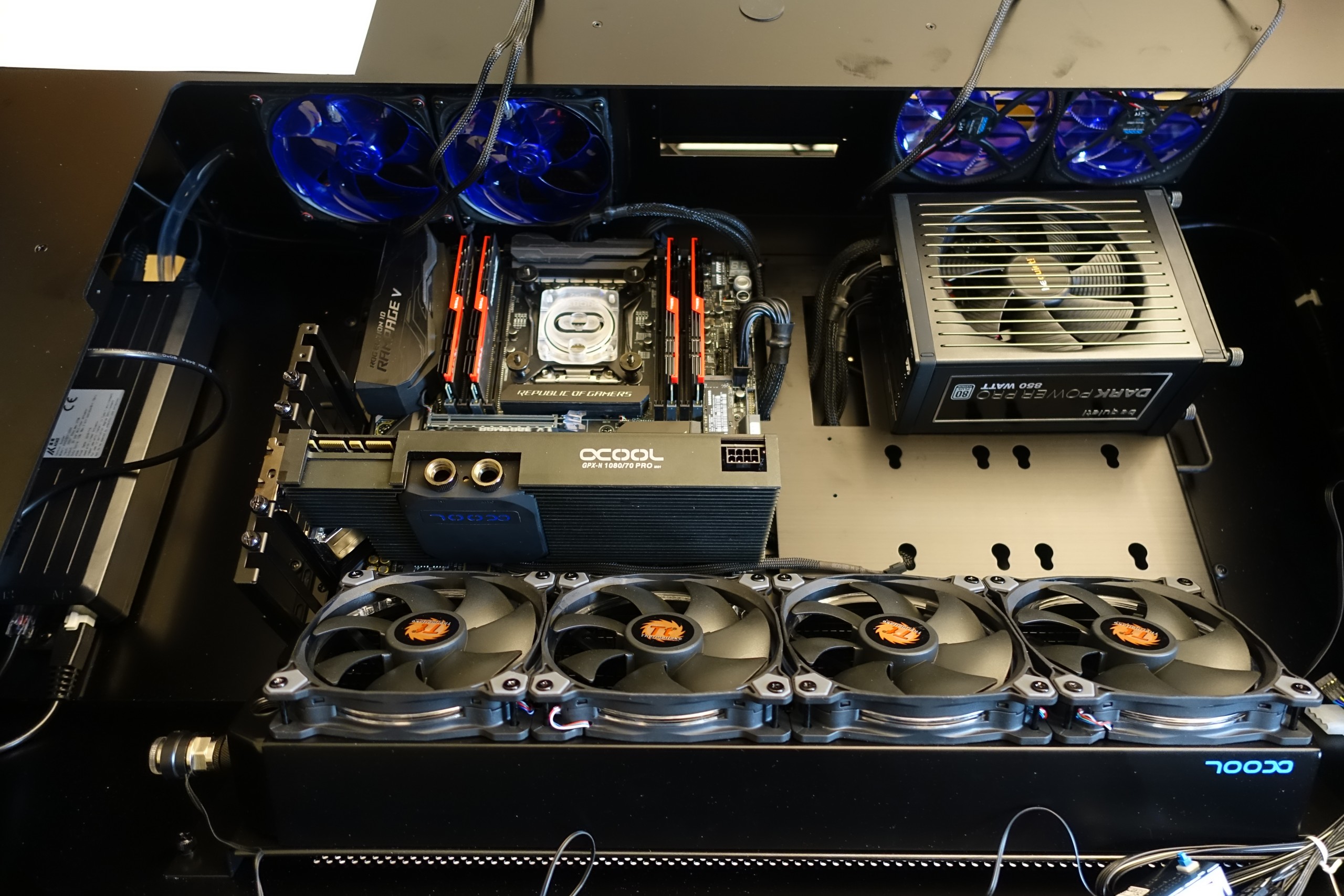
That's why we have positioned a large compensating tank above the radiator, into which the fully heated water runs. From there it runs down into the radiator and then into the first graphics card cooler. This ensures that there is always enough water in the lead-up so that the two pumps never run dry. From the two graphics cards, the water then flows through the smaller radiator to get back to the compensation tank cooled down by the CPU.
We quickly discarded the lower, second container, which would have become a little too much of a good thing. But what you can see well in the picture is the 120 mm fan, which is fixed vertically at an angle. This provides some airflow to the cooling fins and backplates of both graphics card coolers, which is quite necessary as they are not real fullcover coolers, in which the voltage converters are cooled directly by the water.
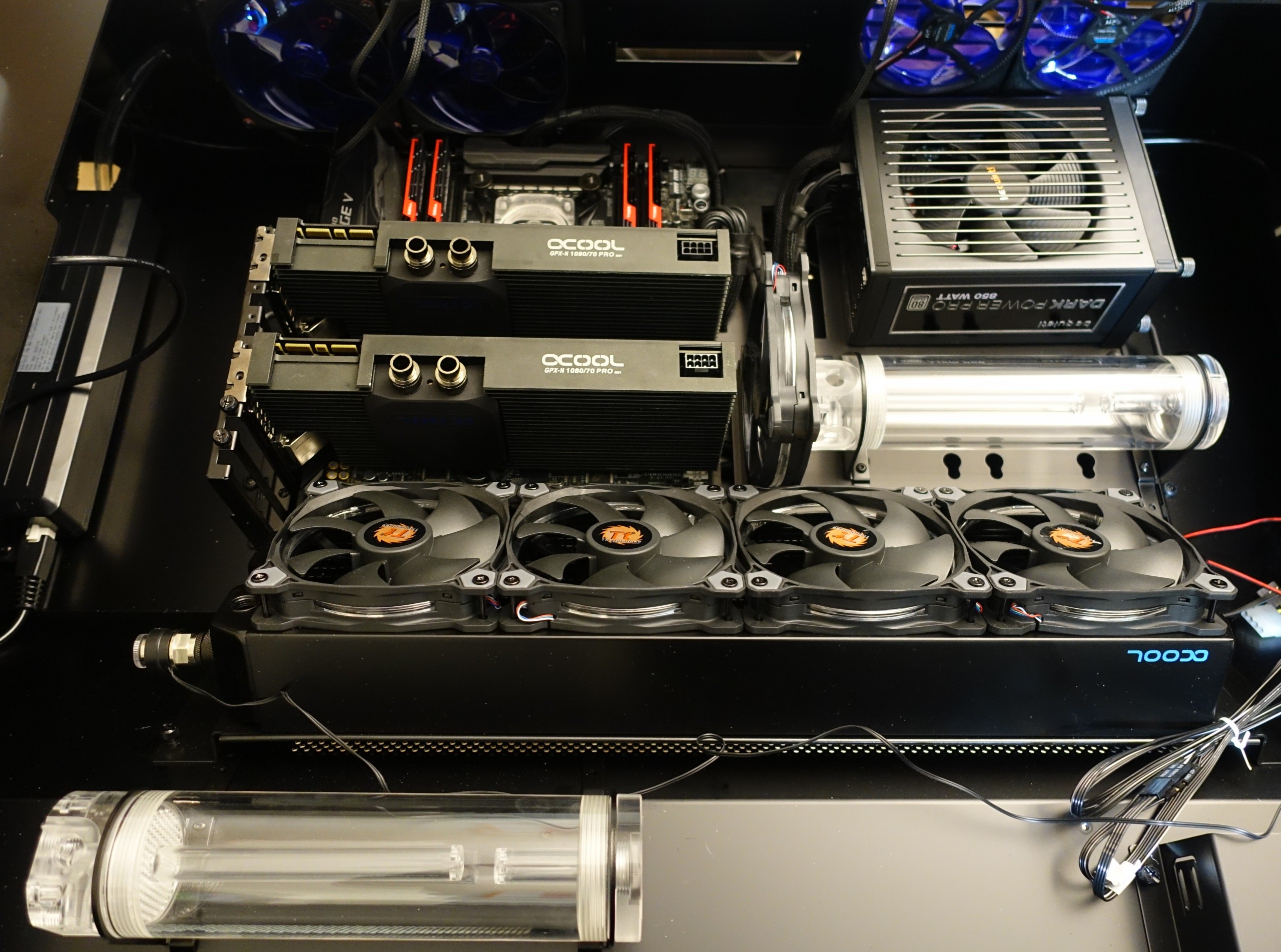
Here, too, we thought something, because per card, at least approx. 25 to 30 watts of waste heat is released into the air and not to the water. The resulting warm air from this waste heat is disposed of by the many fans in the system without complaint and without problems. The airflow in the housing is also clearly and structuredly regulated, so that nowhere can a "heat bell" arise. Due to the above, closed glass plate, one is a bit handicapped from the beginning.
However, with the partial air cooling at the end, this circumstance also keeps the water a little cooler, as we will see later. And that's exactly what saved us a little bit when we went to the 5-hour stress test. Thus, a supposed disadvantage of the cooling solution even became a welcome feature, if one only approaches the whole thing with optimism enough.































Kommentieren